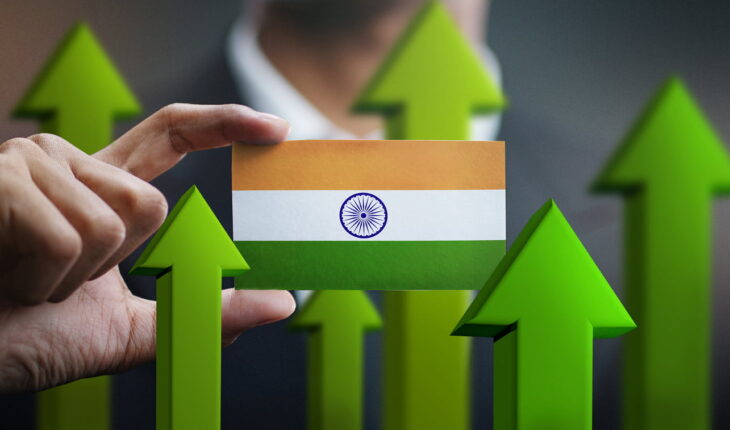Nearly everywhere, there is talk about how India’s economy is growing quickly to become the third largest in the world. Is this a set narrative to attract global economic progress ? What are the supporting economic data and facts ? Is this an election ploy ?
It is significant that India’s economy currently stands as the fifth largest in the world, a testament to its economic success. In 2022, India overtook England in terms of GDP size, marking a significant economic milestone as it rose to the fifth rank.This progress of India has been great in the last decade. In 2014, India used to be at the tenth position. At that time, India’s GDP was equal to 1.86 trillion US dollars and ahead of India, Italy was 2.14 trillion dollars, Brazil 2.21 trillion dollars, England 2.79 trillion dollars, France 2.81 trillion dollars, Germany 3.7 trillion dollars, Japan 5.21 trillion dollars, China 9.57 trillion dollars and America was at the forefront at 17.55 trillion dollars. At present, India’s GDP is around four trillion dollars, although there has been no official announcement of this GDP, but the figures are predicting that after the results of the last quarter of the financial year 2023-24, India’s GDP will come to this level. This confirms that India’s GDP has increased more than two times in the last decade. This in itself is very surprising because during this period the whole world has seen a period of economic recession for almost two years due to the Corona epidemic and the Indian economy also endured a negative growth rate of about 25 percent for the first time since independence.
For the first time, the International Monetary Fund (IMF) acknowledged that India will rank third in terms of GDP. Considering India’s consistent annual economic growth rates of 6 to 7 percent, the IMF estimated that by the year 2027, India’s GDP would surpass the $5 trillion mark. Currently trailing behind Germany and Japan with levels around $4.95 trillion and $5.08 trillion respectively, India will then overtake them, becoming the world’s third-largest economy. Additionally, by 2027, China will remain in second place with $25.72 trillion, and the United States will maintain its top position with $31.09 trillion. This means even after becoming the third-largest economy, China will still be economically more than five times larger than India, and the United States will be more than six times larger economically.
According to the facts from several research bulletins following the IMF’s previous estimate, by the year 2026, there will be a $500 billion increase in India’s healthcare, auto, and retail sectors. While dreaming of becoming the third-largest economy, it is crucial to understand the reality that India still lags far behind in per capita income. Even after surpassing England to become the fifth-largest economy, there is a clear gap of 20 times in per capita income between the two countries. Moreover, in the past decade, India has only climbed six positions in the global ranking based on per capita income. Currently, out of 189 countries, India ranks 141st in terms of per capita income, while it was at 147th position in 2013-14. In the past decade, per capita income in India has increased from $1,438 to $2,389. It is evident that in the past decade, the increase in per capita income has been just over half of the GDP growth, despite GDP more than doubling.
Achieving the milestone of becoming the third-largest economy based on GDP seems possible, but along with that, it has become extremely necessary to aim for rapid growth in employment through economic policies. According to a recent report by the International Labour Organization, a part of the United Nations, the unemployment rate in India has been steadily increasing. In 2012, there were approximately 100 million unemployed individuals in India, while by 2022, this number had risen to 229 million. As a result, the unemployment rate increased from 2.18% to 4% over the past decade. In India, only about 20 to 21% of employment falls under regular employment,the remaining are in the categories of irregular employment and self-dependent. The per capita income of people in the irregular and self-dependent categories is very low.
In the context of India’s economic development, a bitter truth is that India’s agricultural sector has fallen far behind. Increasing its contribution to GDP has now become extremely necessary; otherwise, achieving an increase in per capita income won’t be easy. One of the reasons behind this is the dependency of 50% of the population on agriculture for their livelihood. Additionally, it is crucial to bring the manufacturing sector, which is a significant source of employment, into the mainstream rapidly. It is also worth noting that for the past three decades, the backbone of India’s economic development has been the service sector. It has shouldered this responsibility quite effectively. However, today, the rapid economic disparity in India, which symbolizes the gap between poverty and prosperity, is largely due to the service sector. Although the service sector contributes more than 50% to GDP, its share in employment is only between 30 to 35%. Furthermore, it is essential to understand that within the service sector, there are several other sectors whose progress depends on a strong dollar and, consequently, leads to economic growth in the service sector annually. However, this does not contribute to an increase in per capita income. Therefore, alongside increasing GDP, rapid improvement in employment opportunities should also be a major goal. Otherwise, even after becoming the third-largest economy, India will continue to be recognized as a poor country, which would be a bitter truth.
Dr P S Vohra is Writer, columnist and financial thinker, View are personal




